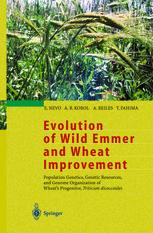

Most ebook files are in PDF format, so you can easily read them using various software such as Foxit Reader or directly on the Google Chrome browser.
Some ebook files are released by publishers in other formats such as .awz, .mobi, .epub, .fb2, etc. You may need to install specific software to read these formats on mobile/PC, such as Calibre.
Please read the tutorial at this link: https://ebookbell.com/faq
We offer FREE conversion to the popular formats you request; however, this may take some time. Therefore, right after payment, please email us, and we will try to provide the service as quickly as possible.
For some exceptional file formats or broken links (if any), please refrain from opening any disputes. Instead, email us first, and we will try to assist within a maximum of 6 hours.
EbookBell Team

4.1
100 reviewsThis book is about the contribution to evolutionary theory and agricultural technology of one of humankind's most dramatic imitations of the evolu tionary process, namely crop domestication, as exemplified by the progenitor of wheat, Triticum dicoccoides. This species is a major model organism and it has been studied at the Institute of Evolution, University of Haifa, since 1979. The domestication by humans of wild plants to cultivated ones during the last ten millennia is one of the best demonstrations of evolution. It is a process that has been condensed in time and advanced by artificial rather than natural selection. Plant and animal domestication revolutionized human cultural evolution and is the major factor underlying human civilization. A post-Pleistocene global rise in temperature following the ice age, i.e., climatic-environmental factors, may have induced the expansion of econom ically important thermophilous plants and in turn promoted complex forag ing and plant cultivation. The shift from foraging to steady production led to an incipient agriculture varying in time in various part of the world. In the Levant, agriculture developed out of an intensive specialized exploitation of plants and animals. Natufian sedentism, followed by rapid population growth and resource stress, induced by the expanding desert, coupled with available grinding technology, may have triggered plant domestication.